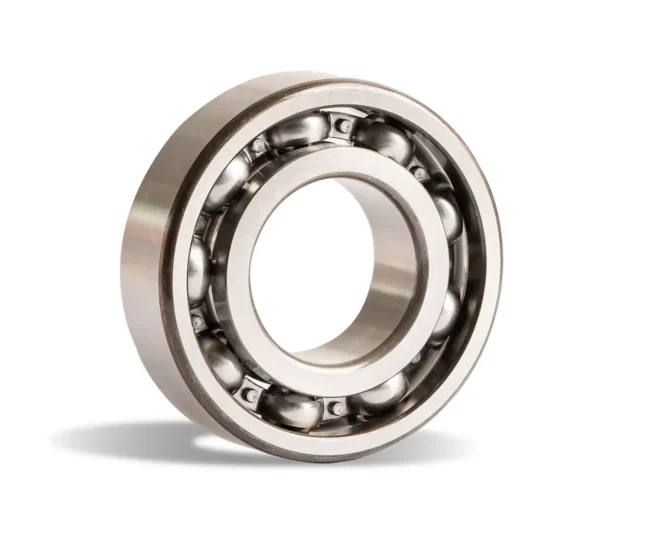Zinc (Zn) belongs to the group of transition metals, but is more similar to alkaline earth metals due to its composition. Zinc is characterized by its bluish-white color and has a brittle structure at room temperature. Zinc alloys are mainly used, for example, to improve the mechanical properties or corrosion resistance of other metals. Zinc is usually extracted from the earth’s crust using the hydrometallurgical or pyrometallurgical process.
Zinc can be divided into several subgroups, depending on its form. Firstly, there is pure zinc, which is often used in galvanization, i.e. for finishing and alloying metals in order to improve protection against corrosion. Copper-zinc alloys, such as brass or zinc-aluminum alloys, are also used to manufacture products with particular strength and hardness. Another form is zinc oxide, which is used as a material additive for the production of rubber or as a pigment in paints and cosmetics. A final frequently used form is zinc sulphide. This can be used in the fluorescent industry or as a window material.
Due to the excellent properties and various forms of zinc, zinc is mainly used for the post-processing of components to improve corrosion protection. Hot-dip galvanizing is used particularly frequently for this purpose, which can significantly increase the service life of metal structures, for example. Other areas of application for zinc alloys include the automotive industry, the construction industry and metal structures. The following table lists the best-known zinc alloys with their properties and processes.

| Material | Alloys | Description | Services |
|---|---|---|---|
| ZP2 - ZL2 - ZL0430 | ZAMAK 2 | The zinc alloy ZAMAK 2 is one of the most widely used alloys. ZAMAK 2 impresses with its excellent hardness and is also very durable. In addition, ZP2 has very good strength and machinability. These mechanical properties are mainly achieved by the special chemical composition. In addition to the majority of zinc, approx. 4% aluminum, approx. 3% copper and small amounts of other metals are also used in this alloy. ZAMAK 2 is used for many components, but especially for parts with tight tolerances or complex shapes. | Die Casting |
| ZP3 - ZL3 - ZL0400 | ZAMAK 3 | The zinc alloy ZAMAK 3 is very suitable and the most commonly used alloy for die casting, because it impresses with its excellent castability and has a low melting point. These properties make it possible to manufacture products with very tight tolerances and highly complex shapes with ZL0400. On the one hand, this increases dimensional accuracy while, on the other, the precise production also reduces the need for reworking. | Die Casting |
| ZP5 - ZL5 - ZL0410 | ZAMAK 5 | ZAMAK 5 is also a very well-known zinc alloy and is highly resistant to corrosion. Compared to the other zinc alloys, ZL0410 contains a higher proportion of copper, which increases the strength, but at the same time some of the malleability is lost. Besides this, ZAMAK 5 has similar advantages to the previous alloys, such as the ability to manufacture complex products and its excellent density. Typical applications for ZAMAK 5 include automotive parts or electronic components. | Die Casting |
| Z33523 | ZAMAK 7 | The zinc alloy ZAMAK 7 is a further development of the alloy ZAMAK 3. Compared to ZAMAK 3, this alloy has a lower magnesium content and is particularly impressive due to its improved castability. In addition, this alloy also has excellent ductility and surface quality. These properties make ZAMAK 7 an alloy that is particularly suitable for thin parts, but also for components with special requirements such as the need for high formability. | Die Casting |
Zinc is particularly impressive due to its excellent corrosion protection, especially as an alloy for steel and iron. Certain finishing processes such as hot-dip galvanizing can significantly increase the service life of numerous base metals by forming an oxide layer, which can therefore be used in environments where components are exposed to severe weathering and chemical reactions. Another advantage is the recyclability of zinc. Zinc is 100% recyclable, making it a sustainable option when choosing a material. By combining it with other metals such as copper or aluminum, many alloys can be created that can be used in various industries. These include the metal industry as well as consumer goods and medical products.
Although zinc generally offers very good corrosion protection, especially as an alloy, protection can be limited in acidic or alkaline environments. In addition, care must be taken not to mix zinc with other metals such as lead during extraction in order to maintain the desired properties. Furthermore, zinc has a lower hardness and strength compared to metals such as steel or aluminum, making it less suitable as a building material, e.g. for building structures with high mechanical loads.
* By submitting the form, you agree to the assemblean privacy policy.